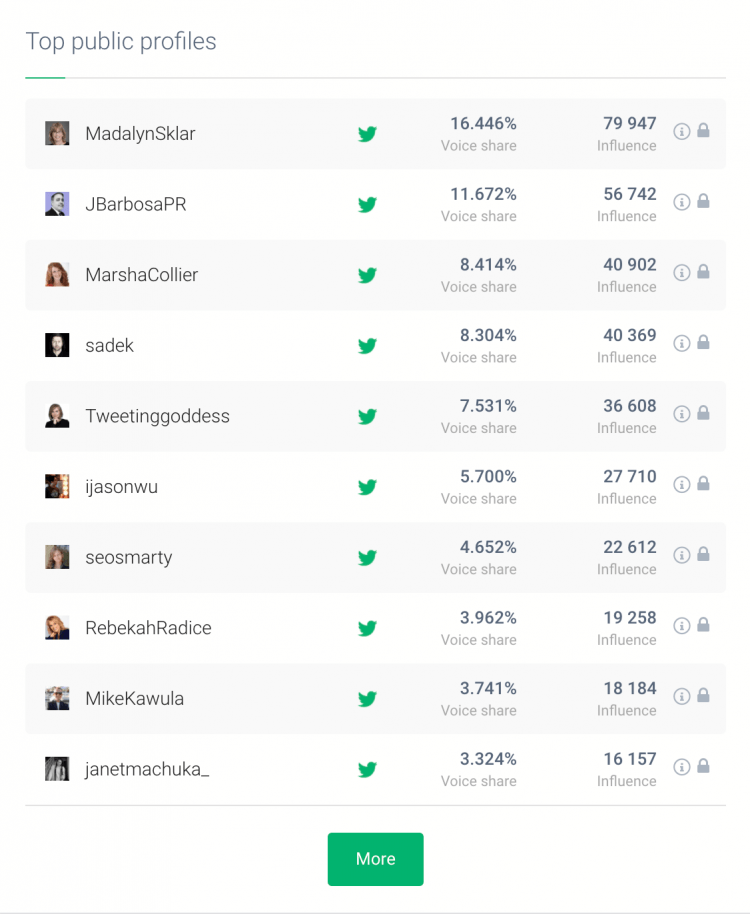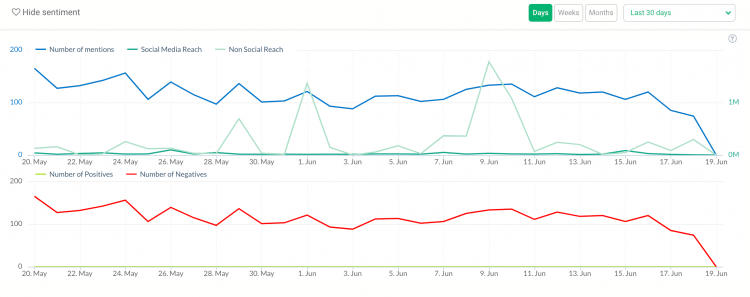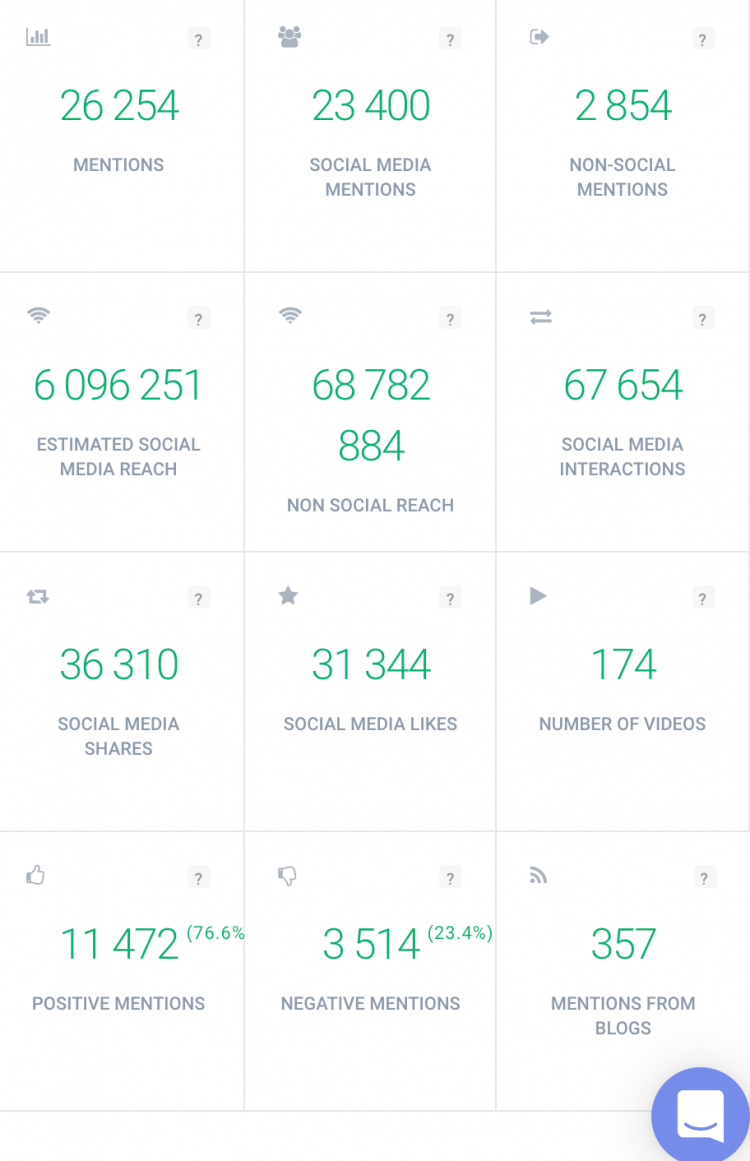Guide to social media engagement
Table of contents
What is social media all about? Many would argue that it’s about meaningful interactions between users. What does it mean for brands presence on social media? Now, more than ever, is time to build social media engagement around your business profiles.
Delivering the right message, to the right people, at the right time has become one of the most important part of building improving your social media engagement.
Brands need social media engagement. Without the engagement, you won’t be able to achieve your business goals and impact your bottom line.
Robust social media engagement levels will help you:
- increase customer loyalty and create word of mouth marketing
- improve your customer experience by answering questions and responding to complaints
- build brand awareness by becoming an industry leader
Building social media engagement is a lengthy process. However, the results will be beneficial to your business.
Don’t know where to start while working on your social media engagement?
Take a look at our comprehensive guide to social media engagement! You’ll find the answers almost all questions regarding social media engagement.
What is social media engagement?
Social media engagement is a stream of interactions between you and other social media users.
For social media marketing strategy to be effective, you need to build a long-lasting relationship between you and your target audience. That’s why it’s vital to look at social engagement as a continuing string of communication rather than a singular interaction.
The key to successful social media engagement is using social media channels to create authentic interactions, monitor discussions, and provide value to other users.
Every social media channel has its rules, which you have to obey if you want to build or improve social media engagement.
Is social media engagement important?
Without a doubt, it is!
Especially in today’s social media world, where every company has creative social media engagement strategies and bigger and bigger marketing budgets.
Social media engagement can make a difference for your business. A loyal following is the best form of marketing. Happy customers will share their experience with their friends and family. That’s a priceless form of advertisement.
Moreover, creating social media engagement will help you during a crisis. A crisis will hit you sooner or later. Building social media engagement will help you manage the social media crisis.
What’s worth mentioning is that social media engagement begins long before your customers or potential customers interact with your brand.
When you think about social media engagement, consider not only direct communication between your followers and your brand, but also the messages you send with your marketing strategy.
To put it simply — don’t wait for your customers to reach out to you. Instead, show how your product or service can solve their problems and help in everyday situations.
How to increase social media engagement?
You probably already have at least a couple of social media profiles. Some people engage with your social media content.
What should you do to improve social media engagement?
Having a good organic social media engagement means that your content is resonating with your target audience. It means you’re producing exactly the content your audience is looking for.
Of course, this can mean something different for each social media platform. Hashtags (especially trending hashtags) are crucial to getting engagement on Instagram, while participation in Twitter chats and simply conversing with people can increase your Twitter engagement.
Meanwhile, sharing user-generated content and engaging in Facebook Groups are more effective on Facebook. This video shares even more good tips on how to increase your social media engagement on Facebook:
There’s also nothing wrong with boosting your social media engagement a bit with paid ads, but ask yourself this: how likely are you to interact with an ad? Probably not very. Neither is your audience.
But when they actively search for something — a product, answer to their question, you named it and you can provide an answer? Score!
Check:
Tactics to increase social media engagement
Let’s be honest – having robust social media engagement rates is not a piece of cake. It takes time and effort to build an engaged community around your brand.
Many estimate that there will be around 2.77 billion social network users in 2019. A slice of this pie are your potential customers. And they’re ready to hear your message. So it’s definitely worth the effort.
But how to reach out to them in all the noise? Here’re our tips and tricks to improve your social media engagement.
Social media listening and social media engagement
Because successful social media engagement depends on your abilities to listen to your target audience, a social media listening tool will be of great help.
I strongly recommend Brand 24, not only because I work here, but because it’s also one of the most robust and yet affordable tools on the market.
Brand24 is a media monitoring tool, which means it will collect publicly available online mentions from the whole Internet. When it comes to social media, the tool will collect mentions from Facebook, Instagram, Twitter, YouTube, Twitch, and TikTok.
Brand24 starts at $49 and offers a 14-day free trial (no credit card required).
Social media monitoring starts by creating a project. In the project settings you need to fill in keywords you’d like to track on the Internet. Think about:
- the name of your company;
- the name of your product or service;
- your branded hashtag;
- general terms related to your industry.
Depending on what you want to achieve, you can create separate projects for every keyword. For example, if you want to measure hashtag performance I recommend setting up a separate project with just your branded hashtag.
Once your project is created, the tool will start gathering and analysing all publicly available mentions.
All the data are an immense help when it comes to improving your social media engagement. Let’s see how you can use them!
Choose the right social media platform
It sounds like a no-brainer, but if you want to have a high social media engagement you need to be present on the right social media channel. Broadcasting into the void won’t bring you anywhere.
Which means you have to analyse your audience and search for social media channels where your audience is present.
Thankfully, that’s the first thing you’ll spot when you log in to your Brand24 dashboard. All the mentions are categorized according to their source.
Here how it looks in our case:

Our audience is most active on social media platforms, and he focuses his social media activities on these platforms.
If you want to analyse some other, more niche or local, social media channel, we got you covered! Simply go the filters on the left side and filter the results according to a specific domain.
Create social media engagement
I wasn’t joking when I said social media engagement looks like a long-term relationship. And every relationship needs a good start!
Don’t be afraid to start a conversation. I know, it takes some nerves to start talking first, but it’s certainly worth the risk.
The easiest way to start a conversation is to simply ask about something. What do your customers like about your product? How do they use it?
You can encourage users to show a practical application of your products. Inviting your followers to post user-generated content (UGC) has several positive effects:
- You can reach a much wider audience. The followers of your followers will see your product. That means you get much bigger exposure, which can result in improved social media engagement.
- You can show your audience that you care about them. Commenting on your users’ photos or sharing them (with their permission, of course!)
- It will help you come up with content ideas. The amount of content you have to generate on a daily/weekly/monthly basis can be quite overwhelming. UGC, be it photos, statutes or tweets, will help you fill your content calendar.
Another great thing about conversations is that they are giving your brand a human touch. And when people see a human behind the corporate message, their trust level goes up.
Cooperate with influencers
Influencer marketing has been the go-to social media engagement strategy.
What’s all the hype about you might ask?
Think of social media influencers as friends who recommend products or services they find particularly useful. A recommendation from an influencer build trust and improve social media engagement.
Influencers, especially micro-influencers, are the best brand ambassadors you could wish for.
How to choose the influencer to boost your social media engagement?
The most effective influencers are probably already talking about you! You can spot them with a little help from social media monitoring tool.
All the data you’re interested in is in the Analysis tab.
Brand24 collects and analyses social media mentions. One of the perks of the analysis is a tab called “Influence of social media authors”.

You can easily spot the most influential and active authors talking about your product or the ones that are the most active within your business niche.
Respond to negative reviews
Every company, sooner or later, will receive a negative review. That’s not an end of the world!
On the contrary, a negative review can boost social media engagement.
It all depends on your reaction to the review. There are a couple of rules you need to follow though!
Firstly, you need to react quickly. The sooner, the better. Your customers expect an answer to their complaint within the first hour.
How to spot a negative review in time?
With a little help from social media listening tool! A real-time social media monitoring collects all the publicly available mentions. To make sure you spot the negative ones right away, take a look at the sentiment filter.
All you have to do is swipe the tab to the left, and the tool will display only negative mentions from a specific time frame.

Once you spot a negative social media post, click on engage and you’ll be redirected to the source of the mention.
Do you wonder how will you get there on time to prevent an escalation of a crisis? We have three possible solutions:
A Slack integration – connect your project with a Slack channel and you will get a notification when there’s a new negative result.
Email notification – receive a Storm alert when there’s an unusual spike in the number of mentions.
In-app notifications – we offer an app both for iOS and Android to keep you up-to-date with all the new mentions
If you want to learn more about responding to negative reviews, take a look at this post: Positive Sides of Negative Reviews.
It outlines detailed tactics on how to turn the tables around and benefit from a negative review.
Engage in conversations
With social media monitoring you can not only monitor the conversations strictly related to your company, but also more general topics centred around your business niche.
That comes in handy as you can jump into conversations. Engaging in conversations will help you to:
- reach brand new audiences – there are people who are unaware of your company and a way it can help them. Find them and offer them your services. Even if they decline your offer, you’ll make them aware of your company.
- establish your brand as an industry leader. Nike is a leader not only because it makes sweating glamorous, but because it offers a whole lifestyle. You can download free training plans and engage in a community build around your discipline. Think about doing something similar around your brand!
The perks of robust organic social media engagement are numerous and impossible to ignore. It’s almost impossible to promote your business without the use of social media.
Improving your organic social media reach should be on the top of your marketing to-do list. Hopefully, now you know where to start!
How to measure social media engagement?
Since you already know how to increase engagement, now it’s time to learn how to measure it.
Like with every other social media metrics, you should measure your social media engagement.
Measuring social media engagement levels will give you a lot of useful information, for example:
- what is the reach of your social media posts?
- how do you compare against your competitors?
- what should you do to improve social media engagement?
There’s an old marketing saying — if you don’t measure, you can’t improve it. If you want to improve social media engagement, you have to know how to measure the effects of your work.
Measuring social media engagement will help you prove the value of your work. With hard numbers at hand, you will be able to show how social media impact the company’s bottom line.
What metrics should you take into account while measuring social media engagement?
If you want to measure social media engagement, you should take into account a few metrics common for all social media platforms.
What social media metrics should you take into account?
Likes
Can imagine any social media platform without likes, hearts, or thumbs-up?
It’s important to gain likes under your new social media posts. It’s a strong indicator for social media algorithms that your audience wants to interact with.
Likes are passive form of social media engagement as they don’t require any active form of commitment.
Comments and shares
Many people think that you should count comments and shares together with engagement. But I would argue that these are different types of social media engagement.
Comments and shares are more proactive form of social media engagement. Your users need time to write a comments. If they share a post, they vouch with their authority for the content. That’s why you should count comments and share separately.
Moreover, social shares help you reach brand new audiences.
Sentiment
To have a full picture of what is said about your brand online, you need to how people feel about your brand.
A high levels of social media engagement and prevailing negative sentiment won’t help you achieve your goals. Positive sentiment around your brand will help you increase social media engagement.
Audience growth
Building a social media presence can have many benefits. One of them is increasing your brand awareness.
That’s why you should regularly check the growth of your audience.
You’re on social media for your audience. You should focus on posting content that resonates well with your audience.
Online mentions
Building brand awareness on social media is not only about the growth of your audience. Your profiles mentions are equally important.
Why is it important to track the volume of media mentions of the name of your brand?
Because the more often you’re mentioned online, the more you’re considered to be an industry leader. This kind of awareness can affect your bottom line — the next time a potential customer is looking for a solution that you offer, they might choose your company. Your brand will be associated with positive experiences.
How to measure engagement on social media
Now that you know what to measure, it’s time to know which tools will be helpful for measuring social media engagement.
Depending on your needs, you can measure social media engagement in two ways.
First, many social media networks have dedicated analytics platforms that will provide you with many information you need.
Facebook has Audience Insights, Instagram has statistics, YouTube has YouTube Analytics, and so on.
There are certain advantages for using native analytics platforms.
First of all, they are free. If you’re on a budget, there are an ideal solution.
Secondly, they offer reliable data. After all, who knows better about your Facebook media engagement than Facebook themselves?
But there are some disadvantages as well.
First of all, you will be using separate platforms for every social media channel. Comparing your social media presence will be difficult. You will have to manually extract the data you need and put them in a spreadsheet.
There will also be a problem when you will want analyse the general social media engagement.
Secondly, not every social media platform has an analytics section. Most of the emerging platforms, for example, TikTok or Twitch, doesn’t support advanced analytics.
To get all the data you need, you can take a look at a media monitoring tool.
I’ll discuss the benefits of measuring social media engagement with a monitoring tool on the examples from Brand24.
Firstly, a social listening tool will show you the total volume of mentions and the sentiment analysis of your online presence.
These social media engagement metrics will give you a general understanding of how your company is doing online. The higher the total volume of mentions, the more popular your brand is.
Combine the volume of metrics with sentiment analysis and you will get a comprehensive information about your online presence.

Brand24 offers a set of filters that will help you get the information you need. You can analyse different social media platforms separately or combine all the data.
Another fountain of knowledge hides in the Analysis tab. You will find useful information, such as:
- the total number of social media mentions
- estimated social media reach
- the total number of likes, comments, and shares
- trending hashtags
- top public social media accounts
- context of a discussion

As you can see, social listening tool will not only give you means to measure social media engagement. It will also give you data you need to improve your social media engagement, for example, trending hashtags, or list of influencers you can work with.
FAQ
Why is my social media engagement so low?
Low social media engagement could be due to several factors: your content might not be resonating with your audience, posting times might not align with when your audience is active, or your posts may lack calls to action. Identifying and improving these areas can help in improving social media engagement.
What is an example of social media engagement?
Social media engagement can take many forms, such as likes, comments, shares, retweets, and mentions. For example, if a follower comments on your post or shares it on their own feed, it counts as engagement. These actions are a direct reflection of a successful social media strategy.
How do you use social media for engagement?
use social media for engagement, post relevant and interesting content consistently, respond to comments, ask questions, hold contests, or use interactive features like polls or live videos. Encourage your social media pages’ visitors to interact, creating more social media interactions and boosting engagement.
HANDPICKED RELATED CONTENT
How to measure the results of a PR campaign?
